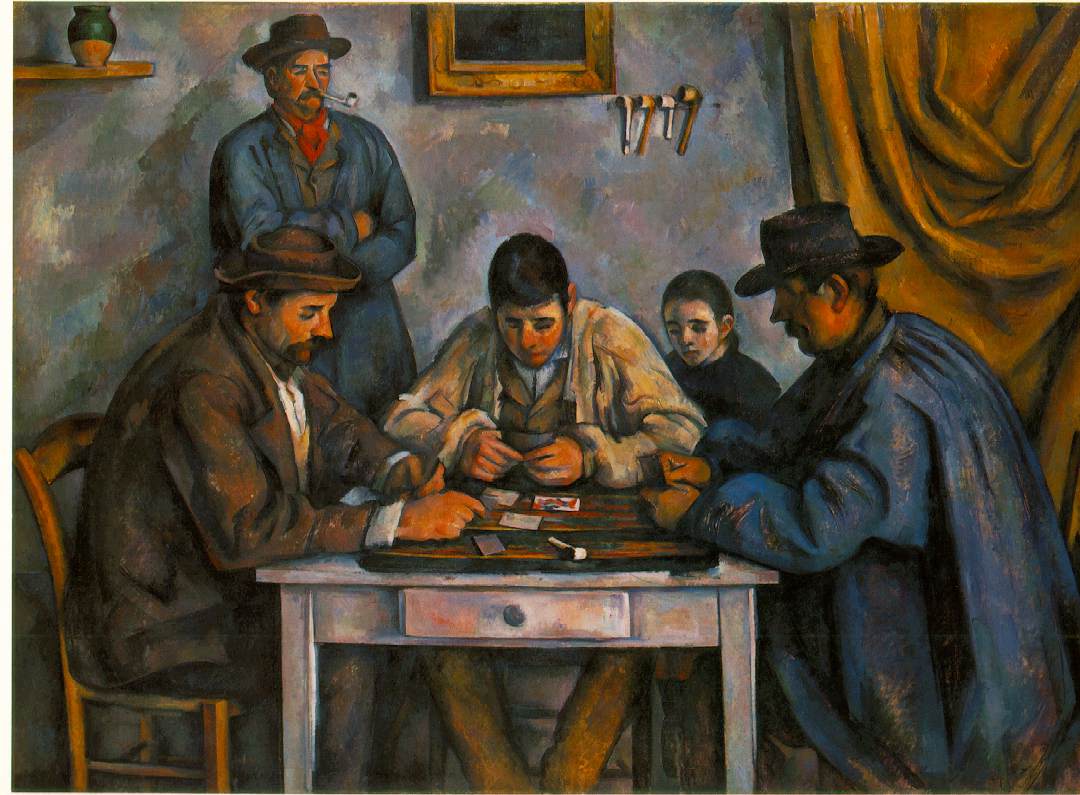Los Angeles, CA
Paul Cezanne is regarded as one of the leaders of the post-Impressionist painting movement as his extensive body of work bridged the gap between the Impressionists (like Monet) and the Cubists (like Picasso).
Cezanne's paintings fetch millions at auctions in the 20th and 21st century (his biggest seller was listed at $60.5 million 93 years after his death) but much like the majority of his peers, Cezanne struggled to make ends meet while he meticulously worked on the paintings that would someday grace the walls of museums around the world.
Artists are habitually broke. In order to supplement his income, Cezanne took a couple of menial jobs including a stint as a tournament reporter on the short-lived Aix-en-Provence Poker Tour.

Three-handed
Cezanne's painting helped freeze time as we can take a glimpse into the every day life of the rounders of that day. Action was down to three players at the final table. Claude Benyamine (yes, the great-grandfather of David) held the chip lead for majority of the final table. Clad in his unusual purplish-blue overcoat, Claude aggressively built a stack.
Cezanne accurately depicted the rail in his paintings. Yes, even in the late 19th century, broke dick players were a pain in the ass just as they are today. The busto peasants frequently hovered over the final table players seeking a handout... a baguette, a bottle of wine, a buy-in to a PLO cash game.
One of the final table players was actually a pimp and the woman sitting behind him was one of the fillies in his stable of working girls -- who were acceptable forms of currency in cash games and rebuy tournaments similar to the scene in Almost Famous during the road managers poker party when Stillwater's chief lost Penny Lane and two other Band Aids to Humble Pie's manager for the total sum of $50 and a case of Heineken.

Heads Up
Some of Cezanne's best work was during the heads up championships in Provence. His choice of muted colors in the background symbolized the darkness of the poker scene at the time, yet the fuzzy brushstrokes and gradations attempt to distort the view in order to portray the thick and suffocating smoke of gambling halls that also dubbed as brothels.
Cezanne had a tremendous amount of respect for the players -- which is why they are represented in brighter colors especially their hands and fingers.
Cezanne's paintings were versions of a hole cams. Even though the actual cards were not revealed, Cezanne simply used white to depict the winning hand and grey for the losing hand.
Cezanne's short stint as a tournament reporter ended in 1890 and he moved his family to Switzerland to focus on more meaningful pursuits with his painting talents.
Original content written and provided by Pauly from Tao of Poker at www.taopoker.com. All rights reserved. RSS feeds are for non-commercial use only.
















No comments:
Post a Comment